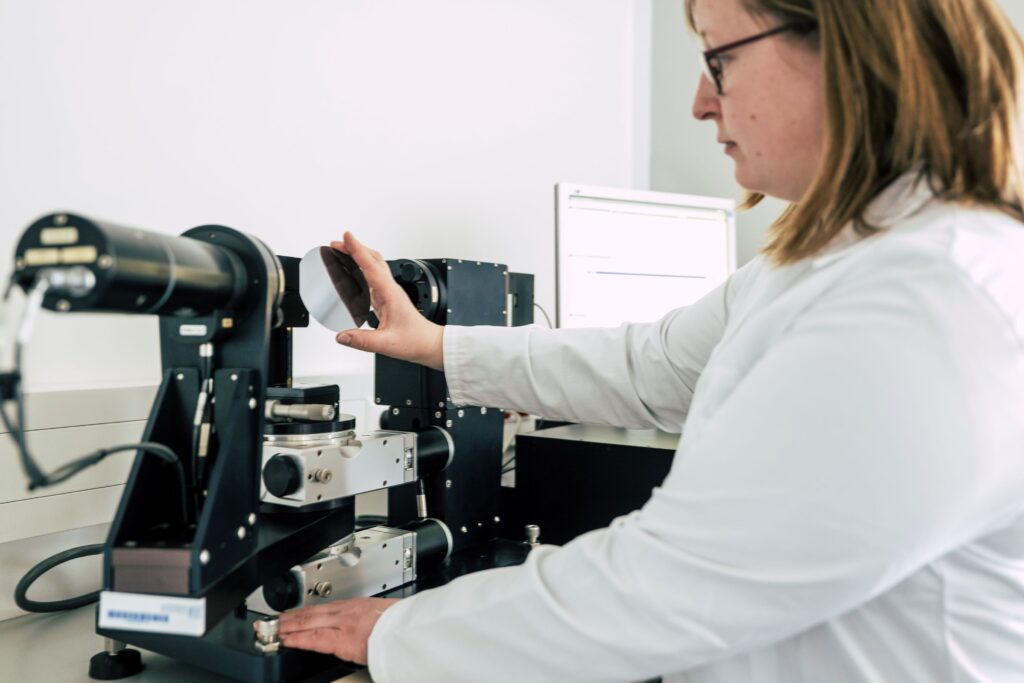Ellipsometry
Variable Angle Spectroscopic Ellipsometry
Device
M-2000® / J.A. Woollam
Expected Result
Accurate measurements of film thickness, refractive index, and absorption characteristics enable manufacturers to optimize processes enhancing product quality in sectors like e.g. electronics and solar technology.
Method
Spectroscopic ellipsometry is an optical technique using the relative changes of the phase and amplitude in polarized light when reflected from a surface, a thin layer or multiple layers. From these measurements, optical properties of the sample like refractive index, permittivity, absorption coefficient, film thickness or anisotropies derive are derived.
Case Study
A customer wants to learn about the refractive index and absorption coefficient of a surface coating over the full visible light spectrum.
Ellipsometer M-2000® spectroscopic ellipsometer, J.A. Woollam Inc.

Specifications
-
Reflection and transmission ellipsometry
-
Wavelength range: 240-1700 nm (UV / VIS / NIR)
-
Possible angles of incidence: 15°-90°
-
Max substrate thickness: 20 mm
-
Measurement spot diameter: 3 mm to 200 µm
-
Typical sample dimension: 1×1 to 10×10 cm²
